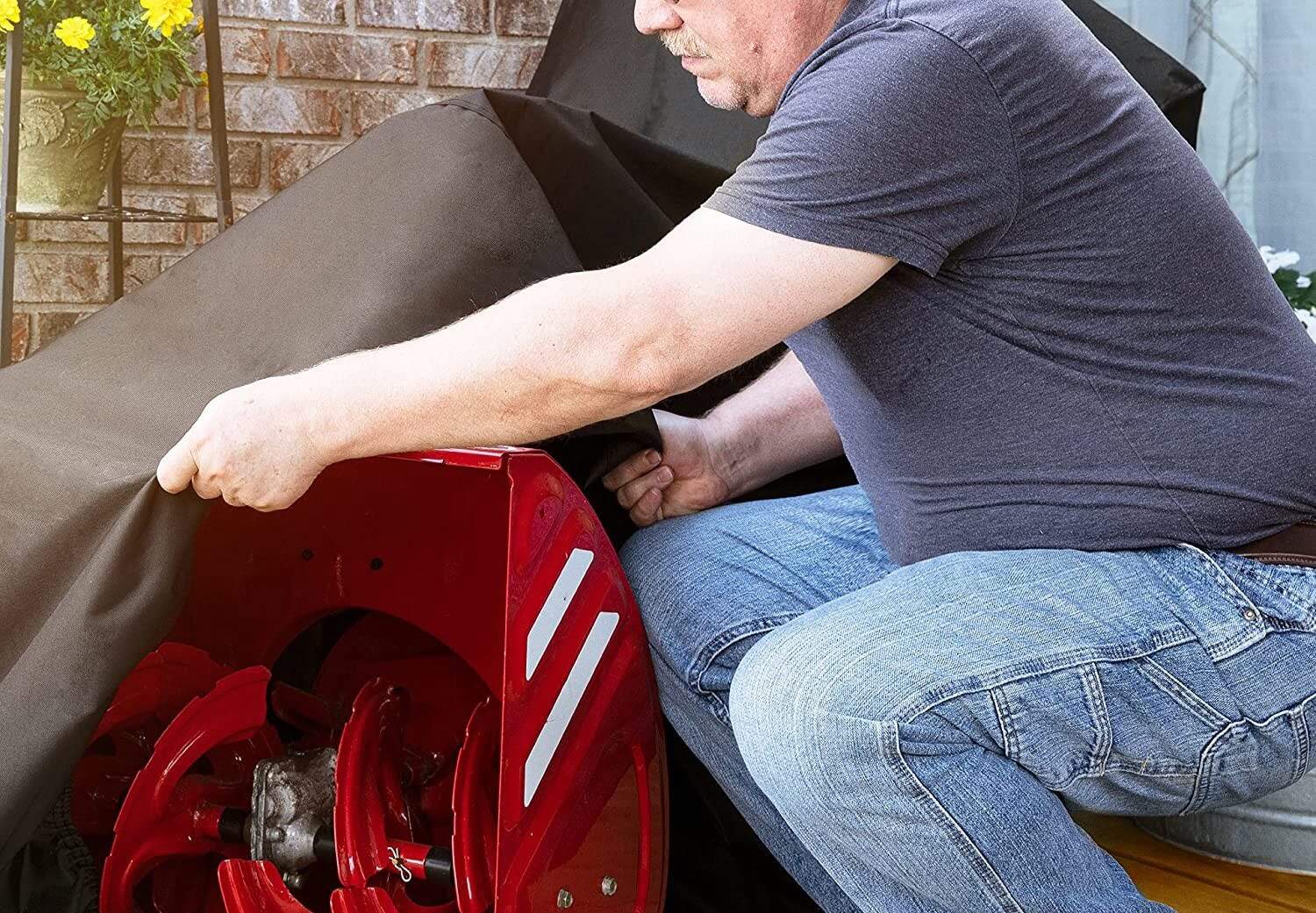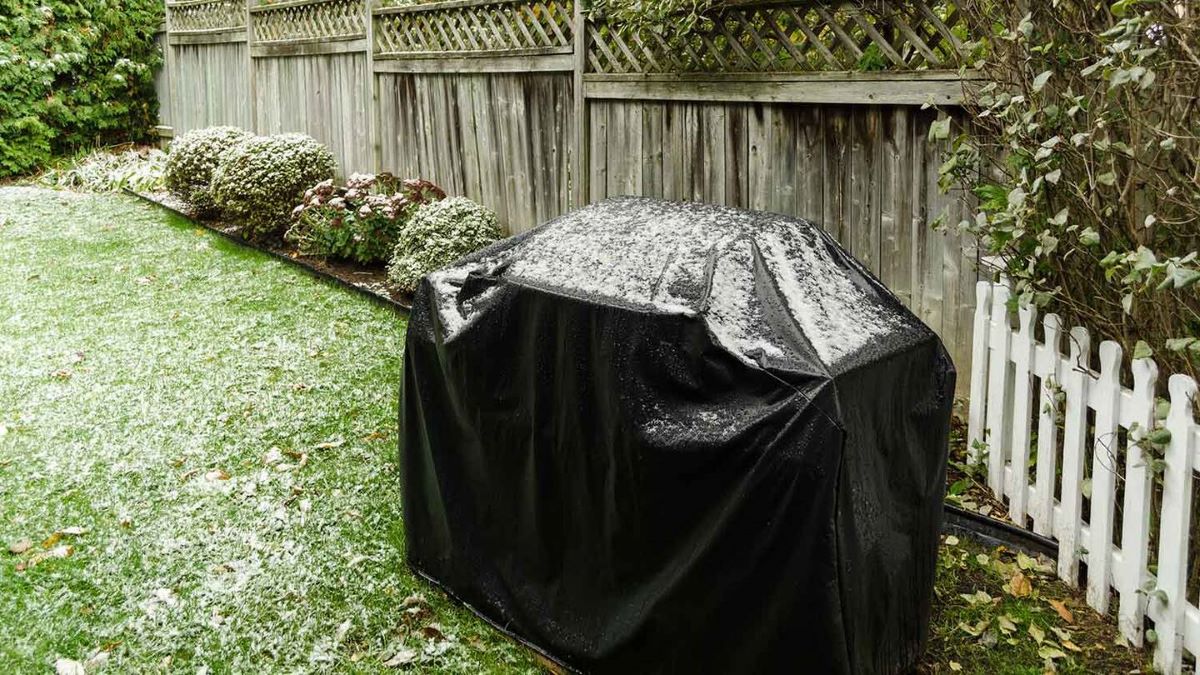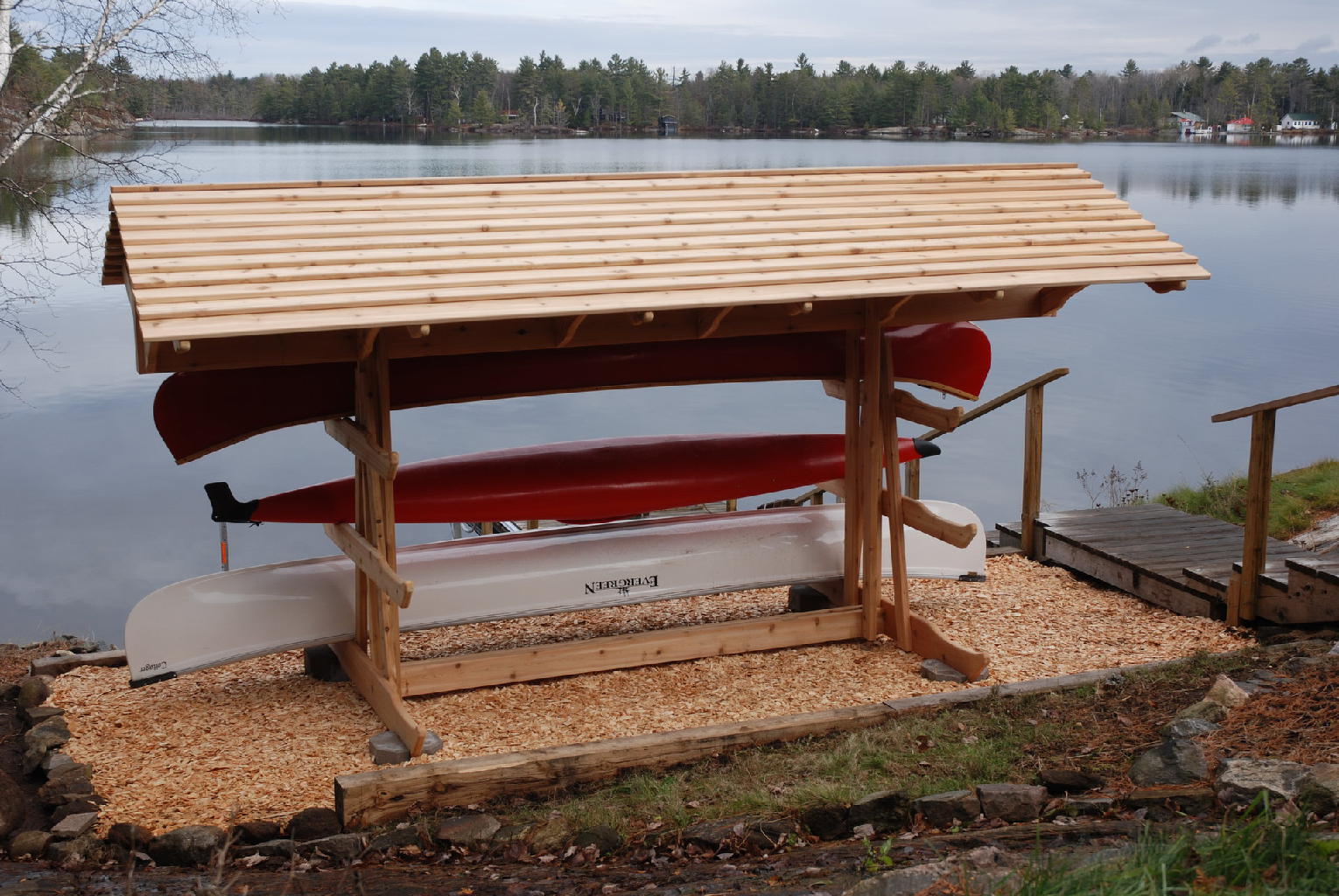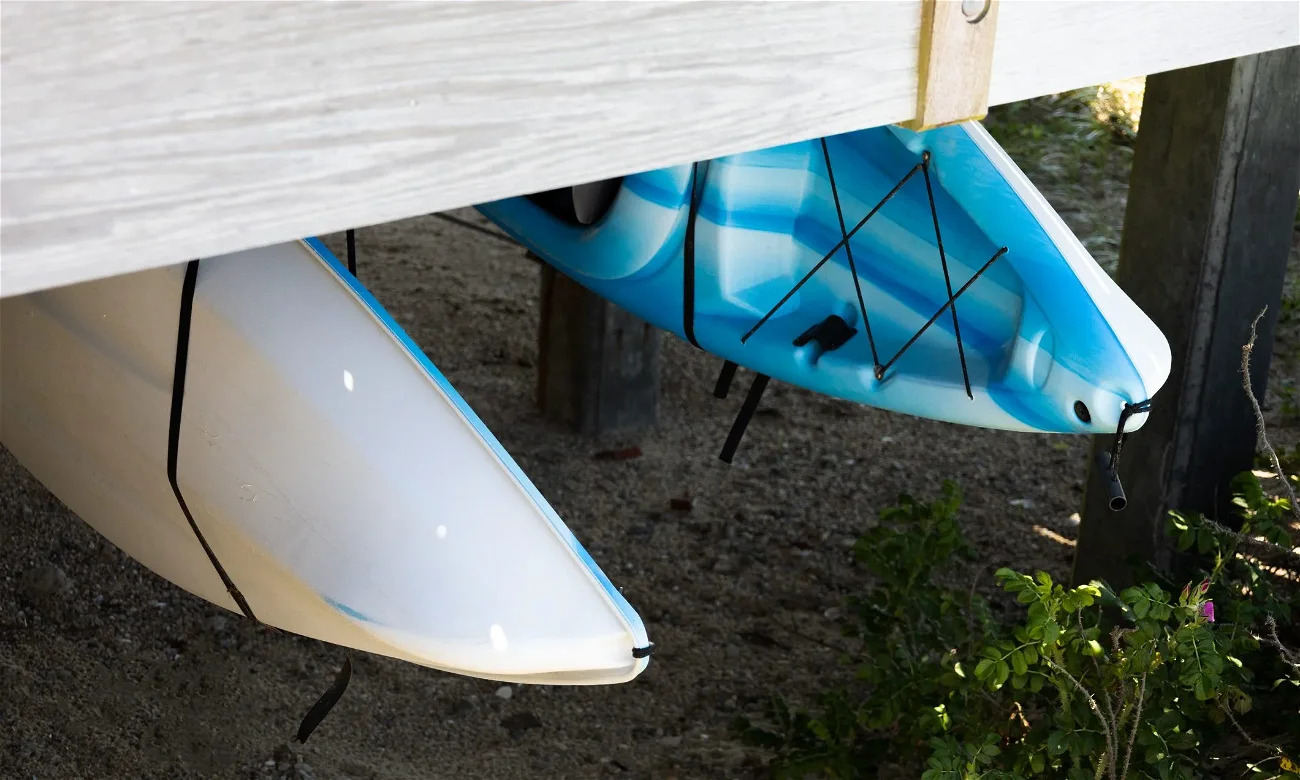

Articles
How To Store Kindling Outside
Modified: August 22, 2024
Learn the best methods and tips for storing kindling outside with our informative articles. Keep your firewood dry and ready for use all year round.
(Many of the links in this article redirect to a specific reviewed product. Your purchase of these products through affiliate links helps to generate commission for Storables.com, at no extra cost. Learn more)
Introduction
Properly storing kindling is essential for anyone who uses a wood-burning fireplace or stove. Having a steady supply of dry kindling ensures that you can easily start a fire and enjoy the warmth and ambiance of a crackling fire during cold winter nights. While most people store their kindling indoors, storing it outside has numerous benefits. In this article, we will explore the advantages of storing kindling outside and provide you with practical tips on how to do it effectively.
When you store kindling outside, you free up valuable indoor space, especially if you have a limited storage area. Additionally, storing kindling outside reduces the risk of attracting pests, such as termites or ants, into your home. It also minimizes the amount of dirt, debris, and bark that can be tracked indoors when bringing in firewood. Storing kindling outside also allows for better air circulation, preventing mold growth that can occur in humid indoor environments.
Now that we understand the benefits of storing kindling outside, let’s move on to the important factors to consider when selecting a location for your kindling storage.
Key Takeaways:
- Storing kindling outside offers space-saving, pest prevention, and improved air circulation. Proper location, preparation, and maintenance ensure a high-quality, accessible fuel source for wood-burning fireplaces and stoves.
- Organizing, stacking, and protecting stored kindling is crucial for maintaining its usability and longevity. Regular maintenance, monitoring, and proper covering help ensure a well-organized, accessible, and high-quality supply of kindling for fire-starting needs.
Read more: How To Store Soil Outside
Benefits of Storing Kindling Outside
Storing kindling outside offers several advantages over keeping it indoors. Let’s explore some of the key benefits:
- Space-saving: Storing kindling outside frees up valuable indoor space. Instead of cluttering your living area or storage room, you can create a designated area outside to keep your kindling conveniently accessible.
- Pest prevention: Storing kindling indoors can attract pests like termites, ants, or rodents into your home. By keeping it outside, you significantly reduce the risk of infestation, ensuring that your living space remains pest-free.
- Improved air circulation: Unlike indoor storage, outdoor storage allows for better air circulation around the kindling. This helps in drying out any moisture and prevents the growth of mold or mildew, ensuring that your kindling remains dry and ready-to-use.
- Reduced dirt and debris: When you bring in firewood from outdoors, it often carries dirt, debris, or bits of bark. Storing kindling outside prevents these materials from being tracked indoors, keeping your living space cleaner and minimizing the amount of cleanup required.
- Easier access: Storing kindling outside provides easy access to your fire-starting materials. You can conveniently grab them without having to enter a storage room or reach behind larger firewood logs.
- Visual appeal: A neatly organized outdoor kindling storage area can enhance the overall aesthetic of your backyard or patio. It adds a rustic touch and creates a cozy atmosphere, especially during outdoor gatherings or bonfires.
These benefits make storing kindling outside a practical and appealing choice for anyone who enjoys the warmth and ambiance of a wood-burning fireplace or stove. Now, let’s move on to the crucial factors to consider when selecting the perfect location for your outdoor kindling storage.
Location Selection for Storing Kindling
Choosing the right location for storing your kindling outside is essential to ensure its longevity and accessibility. Here are some key factors to consider:
- Proximity to the fireplace or stove: Select a location that is conveniently close to your fireplace or stove. This will make it easy to grab a bundle of kindling when you need to start a fire.
- Protection from the elements: Look for an area that offers some protection from rain, snow, and direct sunlight. This will help keep your kindling dry and prevent damage caused by weather exposure.
- Good air circulation: Ensure that the chosen location has adequate air circulation to prevent moisture buildup. Avoid placing the kindling storage area in an area with low airflow or in a damp and shady spot.
- Accessibility: Make sure the location is easily accessible for you to add or remove kindling. Consider factors like ease of movement, proximity to pathways, and any physical barriers that may hinder access.
- Security: If security is a concern, choose a location where the kindling will be less visible to passersby or potential thieves. Alternatively, you can opt for a lockable storage structure to protect your kindling.
- Aesthetics: If you value visual appeal, select a location that blends well with your outdoor space. You can choose a spot that is hidden by landscaping or opt for a decorative storage container that adds to the overall look of your patio or backyard.
Once you have identified the ideal location for your kindling storage, it’s time to prepare the area and create a suitable structure for organizing and protecting your kindling, which we will discuss in the following sections.
Preparing the Storage Area
Before you start storing your kindling outside, it’s important to prepare the storage area properly. Taking these steps will help ensure the longevity and effectiveness of your kindling storage. Here are some key tasks to consider:
- Clean the area: Clear away any debris, rocks, or vegetation from the chosen storage area. This will prevent obstacles and create a clean space for your kindling.
- Level the ground: If the ground is uneven, level it to provide a stable surface for the kindling storage structure. Use a shovel and rake to remove any bumps or unevenness.
- Consider a barrier: Depending on your needs, you may want to add a barrier to define the storage area. This can be done by using bricks, stones, or decorative fencing to create a boundary around the space.
- Create a weed barrier: To prevent weeds or grass from growing around your kindling storage, lay down a weed barrier. This can be a landscape fabric or a layer of mulch to inhibit weed growth.
- Avoid moisture accumulation: If your chosen storage area is prone to water pooling or excessive moisture, consider improving drainage by adding gravel, sand, or raising the area slightly to prevent water accumulation.
- Clearance from flammable materials: Ensure that the storage area is clear from any flammable materials such as dry leaves, firewood, or overhanging branches. This will minimize the risk of accidental fire spread.
By completing these preparation tasks, you will create a suitable and organized space for storing your kindling outside. Once the storage area is ready, it’s time to build a structure that will keep your kindling neatly organized and protected from the elements. We will delve into the details of building a kindling storage structure in the next section.
Building a Kindling Storage Structure
To ensure that your kindling remains organized and protected, it’s important to build a suitable storage structure. Here are some options to consider:
- Kindling rack: A kindling rack is a simple yet effective option. You can build it using wooden planks or metal rods. Design the rack with horizontal slats to allow for proper airflow and drainage. Make sure it is sturdy enough to hold the weight of the kindling bundles.
- Storage container: Alternatively, you can opt for a storage container specially designed for holding kindling. Look for containers made of weather-resistant materials such as plastic, metal, or wood treated for outdoor use. These containers often feature ventilation to promote airflow and keep the kindling dry.
- Enclosed structure: For added protection and aesthetics, you can construct an enclosed structure using materials such as wood or metal. This structure can feature a roof and sides to shield the kindling from rain, snow, and direct sunlight. Consider adding a hinged or removable lid for easy access.
Regardless of the storage structure you choose, ensure that it allows for proper airflow to prevent moisture buildup and mold growth. It’s also important to consider the size of the structure. Make sure it’s spacious enough to accommodate your anticipated amount of kindling while also fitting well within the chosen storage area.
In addition to the structure, it’s a good idea to elevate the kindling off the ground to prevent it from coming into direct contact with damp or wet surfaces. Using bricks, concrete blocks, or a raised platform will help keep the kindling dry and extend its lifespan.
Once you have built the kindling storage structure, it’s time to start organizing and stacking your kindling bundles. We will discuss the best practices for organizing and stacking in the upcoming section.
Store kindling outside in a dry, covered area to protect it from moisture. Use a firewood rack or create a raised platform to keep it off the ground and allow for air circulation. Keep it away from the house to prevent pests.
Read more: How To Store Tires Outside
Organizing and Stacking Kindling
When it comes to organizing and stacking your kindling, there are a few considerations to keep in mind. Follow these tips to ensure a well-organized and easily accessible supply:
- Bundling: Bundle your kindling into manageable sizes using twine or reusable zip ties. Creating bundles makes it easier to grab the right amount of kindling when starting a fire.
- Size consistency: Aim to make your kindling bundles of similar lengths and thickness. This will make them stack more efficiently and create a visually appealing storage area.
- Stacking technique: Start by placing a solid base layer of kindling bundles along the bottom of the storage area. Stack subsequent layers on top, alternating the positioning of the kindling bundles to create stability. This technique prevents them from toppling over.
- Separate by size: If you have kindling of different thicknesses or lengths, consider separating them into designated sections within the storage area. This will make it easier to locate the desired size quickly.
- Labeling: If you want to be extra organized, you can label or mark your kindling bundles with the date of splitting or any other relevant information. This way, you can easily identify older kindling that needs to be used first.
- Regular rotation: To ensure that your kindling remains dry and usable, regularly rotate the bundles by placing the newer ones behind the older ones. This helps ensure that the kindling is used in a first-in, first-out manner, preventing any potential moisture accumulation or degradation.
By following these organizing and stacking tips, you will have a neatly arranged kindling storage area that allows for easy access and a consistent supply of dry kindling. However, it’s important to protect your stored kindling from the elements to maintain its quality, which we will discuss in the next section.
Covering and Protecting the Stored Kindling
To ensure the longevity and quality of your stored kindling, it’s crucial to cover and protect it from the elements. Here are some essential steps to follow:
- Tarp or waterproof cover: Use a tarp or waterproof cover to shield the stacked kindling from rain, snow, and excessive moisture. Ensure that the cover is large enough to fully encapsulate the storage structure and securely fasten it to prevent wind from blowing it away.
- Elevate the cover: Avoid direct contact between the tarp and the stacked kindling by creating a slight gap or adding support beams. This prevents moisture from seeping through the cover and onto the kindling.
- Avoid plastic wrapping: While it may seem like a quick solution, avoid wrapping the kindling in plastic as it can trap moisture and lead to mold growth. Opt for breathable coverings that allow for proper air circulation.
- Ventilation: Ensure that the storage structure and cover allow for adequate ventilation. Proper airflow is essential to prevent condensation and maintain the dryness of the kindling.
- Regular inspection: Periodically check the condition of the cover and the stored kindling. Look for any signs of moisture, mold, or pest infestation. Make necessary adjustments or replacements if needed to maintain the protection of your kindling.
By covering and protecting your stored kindling, you can ensure that it remains dry, ready to use, and free from any potential damage caused by moisture, pests, or unfavorable weather conditions.
Now that you know how to effectively cover and protect your stored kindling, let’s move on to the importance of maintaining the storage area and the kindling itself to ensure optimal performance.
Maintaining the Stored Kindling
Proper maintenance of your stored kindling is essential to ensure its usability and longevity. Here are some key maintenance tips to follow:
- Regularly inspect for moisture: Check the stored kindling periodically for any signs of moisture. If you notice dampness or mold growth, remove the affected bundles, and allow them to dry before returning them to the storage area.
- Monitor for pests: Keep an eye out for any signs of pests such as insects or rodents. If you notice any infestation, take necessary steps to remove the affected kindling and address the pest issue promptly.
- Remove debris: Regularly clean the storage area and remove any debris or fallen leaves that may accumulate over time. This will help maintain a clean and organized space for the stored kindling.
- Rotate the kindling: Continuously rotate the stored kindling by using the older bundles first. This ensures that the kindling is used in a first-in, first-out manner and prevents any bundles from becoming too old or unusable.
- Check for damage: Inspect the kindling bundles for any signs of damage or decay. Remove any severely damaged pieces and replace them with fresh kindling to maintain a consistently usable supply.
- Monitor moisture levels: If your area experiences high humidity or excessive rainfall, consider using moisture-absorbing products such as desiccant packs or silica gel inside the storage area. This helps mitigate moisture and keeps the kindling dry.
By regularly maintaining and monitoring your stored kindling, you can ensure that it remains in optimal condition, ready to ignite a cozy fire whenever needed.
Now that you have discovered the importance of proper maintenance, let’s conclude with a summary of the benefits of storing kindling outside and the key points to remember.
Conclusion
Storing kindling outside offers numerous benefits, ranging from space-saving and pest prevention to improved air circulation and reduced dirt and debris. By selecting the right location, preparing the storage area, building a suitable storage structure, and organizing and protecting the stored kindling, you can ensure that you have a readily accessible and high-quality fuel source for your wood-burning fireplace or stove. Regular maintenance and proper monitoring of the stored kindling are essential to maintain its usability and longevity.
Remember to choose a location that is conveniently close to your fireplace or stove, provides protection from the elements, and allows for good air circulation. Prepare the storage area by cleaning and leveling the ground, adding barriers and weed barriers, and ensuring good drainage. Build a kindling storage structure or use a storage container that allows for proper airflow and keeps the kindling off the ground. Organize and stack the kindling in a systematic and consistent manner, and cover and protect it from moisture using a tarp or waterproof cover.
Regularly inspect the stored kindling for moisture and pests, remove any damaged or compromised bundles, and rotate the kindling to ensure its optimal usage. By following these guidelines, you can maintain a well-organized, accessible, and high-quality supply of kindling for your fire-starting needs.
So, whether you enjoy cozy evenings by the fireplace or rely on a wood-burning stove for warmth, take advantage of the benefits of storing kindling outside and enjoy the convenience and efficiency it offers. With proper planning, preparation, and maintenance, you can have a steady supply of dry and readily accessible kindling to fuel your fires and create the perfect ambiance for those chilly winter nights.
Frequently Asked Questions about How To Store Kindling Outside
Was this page helpful?
At Storables.com, we guarantee accurate and reliable information. Our content, validated by Expert Board Contributors, is crafted following stringent Editorial Policies. We're committed to providing you with well-researched, expert-backed insights for all your informational needs.















0 thoughts on “How To Store Kindling Outside”